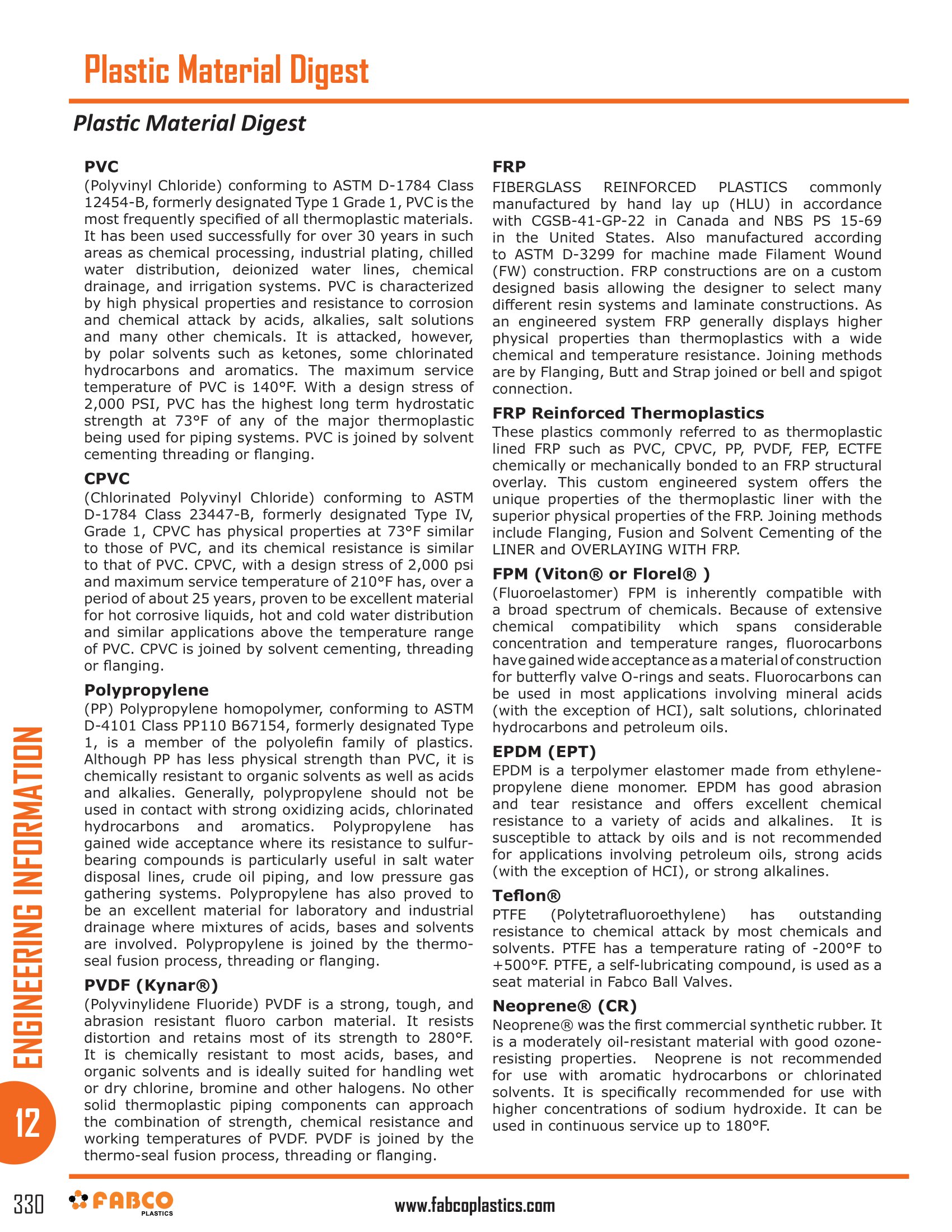Plastic Material Digest

Plastic Material Digest
PVC
(Polyvinyl Chioride) conforming to ASTM D-1784 Class 12454-B, formerly designated Type 1 Grade 1, PVC is the most frequently specified of all thermoplastic materials. It has been used successfully for over 30 years in such areas as chemical processing, industrial plating, chilled water distribution, deionized water lines, chemical drainage, and irrigation systems. PVC is characterized by high physical properties and resistance to corrosion and chemical attack by acids, alkalies, salt solutions and many other chemicals. It is attacked, however, by polar solvents such as ketones, some chlorinated hydrocarbons and aromatics. The maximum service temperature of PVC is 140°F. With a design stress of 2,000 PSI, PVC has the highest long term hydrostatic strength at 73°F of any of the major thermoplastic being used for piping systems. PVC is joined by solvent cementing threading or flanging.
FRP
FIBERGLASS REINFORCED PLASTICS commonly manufactured by hand lay up (HLU) in accordance with CGSB-41-GP-22 in Canada and NBS PS 15-69 in the United States. Also manufactured according to ASTM D-3299 for machine made Filament Wound (FW) construction. FRP constructions are on a custom designed basis allowing the designer to select many different resin systems and laminate constructions. As an engineered system FRP generally displays higher physical properties than thermoplastics with a wide chemical and temperature resistance. Joining methods are by Flanging, Butt and Strap joined or bell and spigot connection.
Products
- Plastic Material Digest
- Thermoplastic Fabrication
- Processing/Machining Plastics
- Instaduct®
- Thermoplastic Instructions
- Solvent Welding Instructions
- Thermo-Sealing Instructions
- Thermoplastic Pipe Joint Repair
- Threading Instructions
- Engineering Data
- Plastic Piping Standards
- Chemical Resistance Guide
- Chemical Resistance Chart
- Glossary of Terms
- HDPE Pipe and Fittings
- PVC Duct Collapse Pressure
- Pump Data
- Conversion Factors
- Fabco Plastics Terms and Conditions
- Fabco Plastics Credit Application























